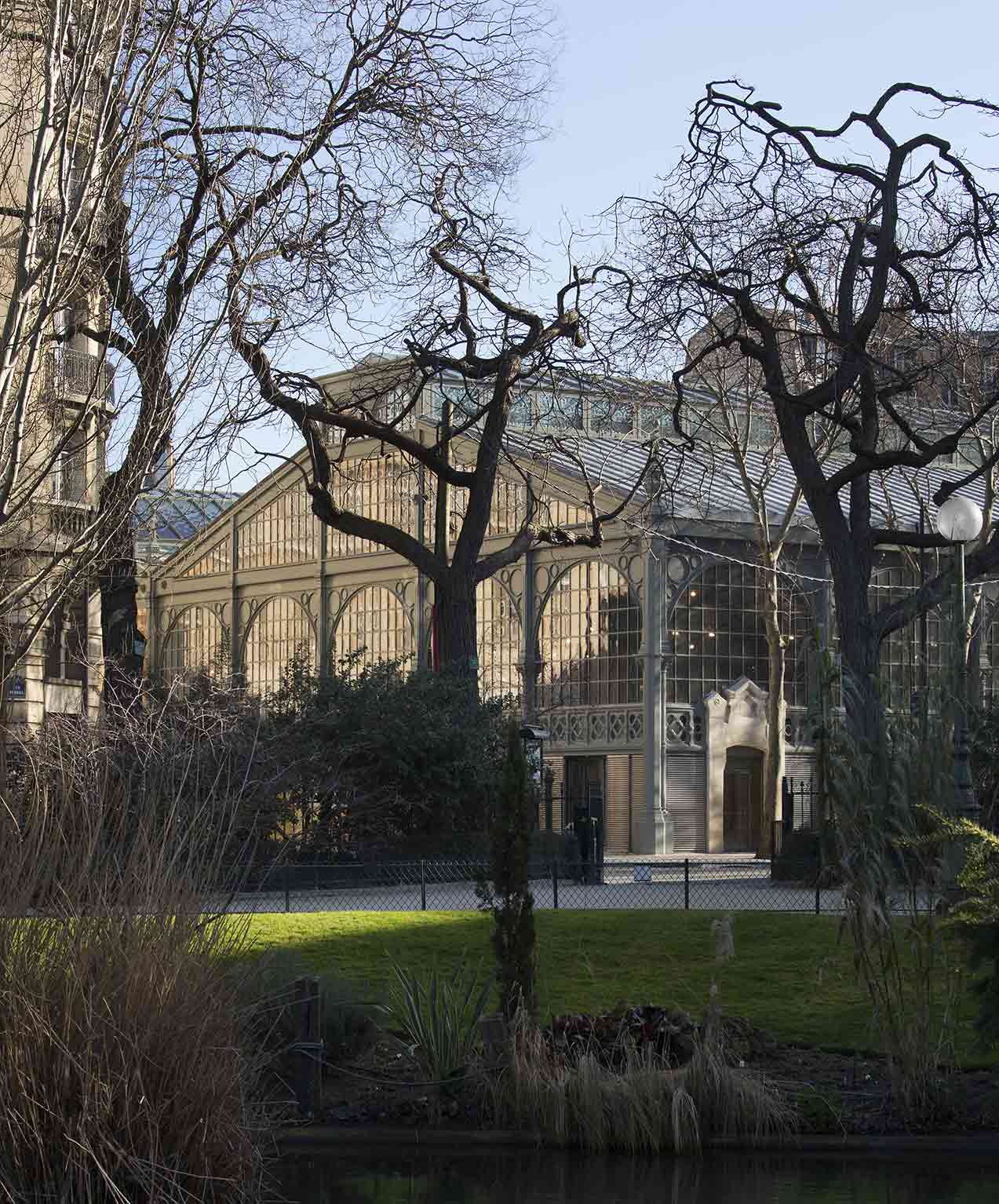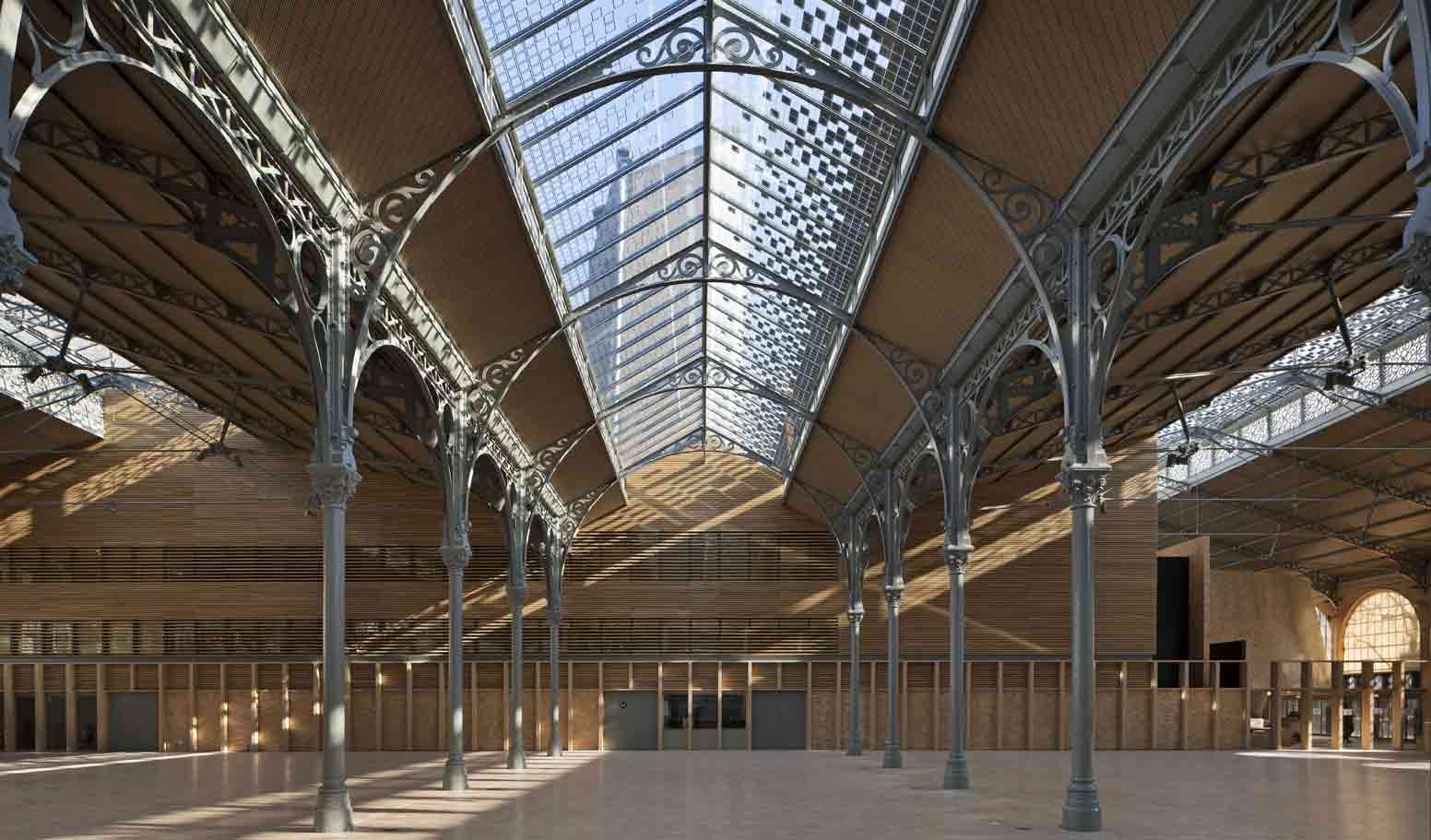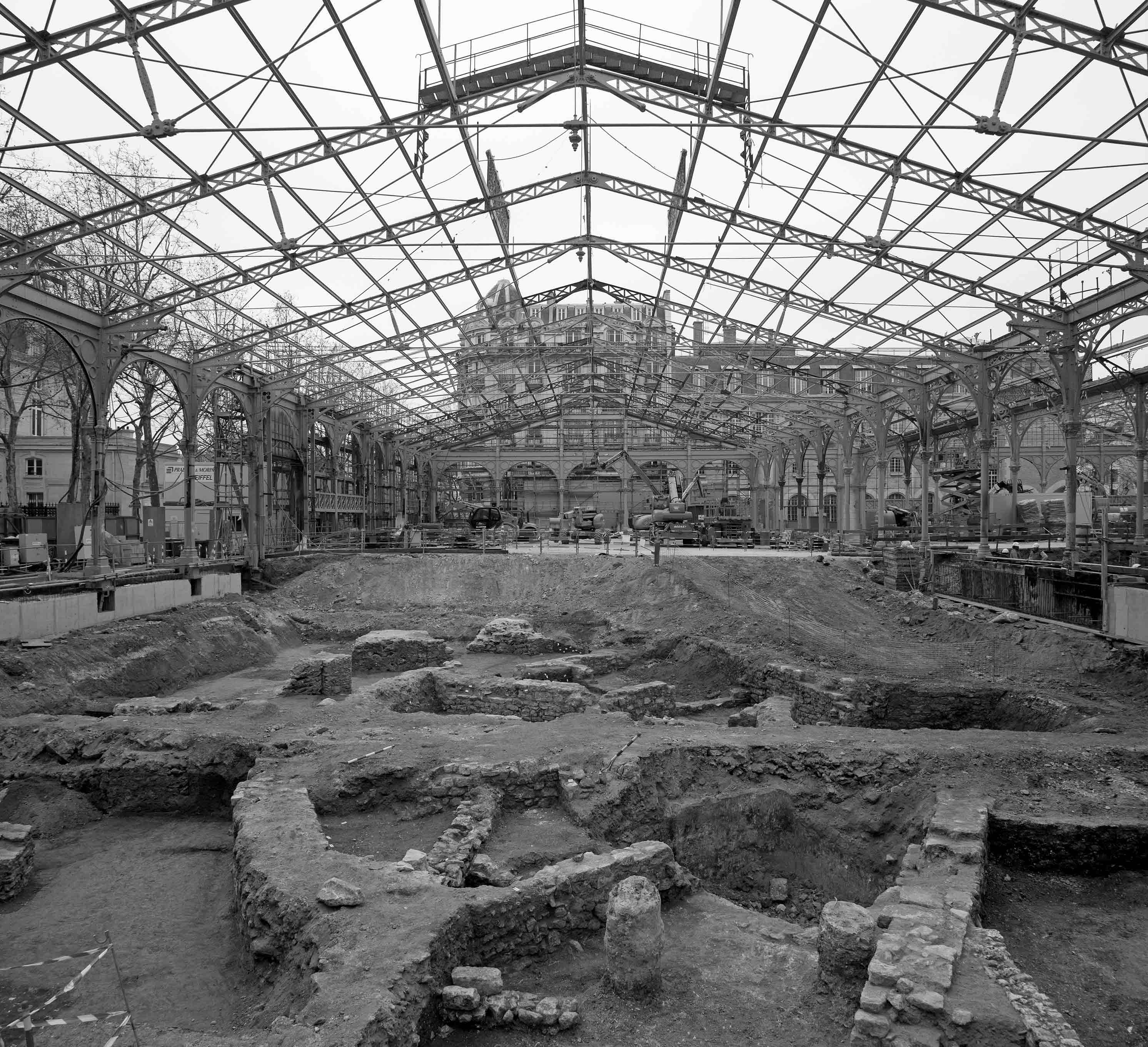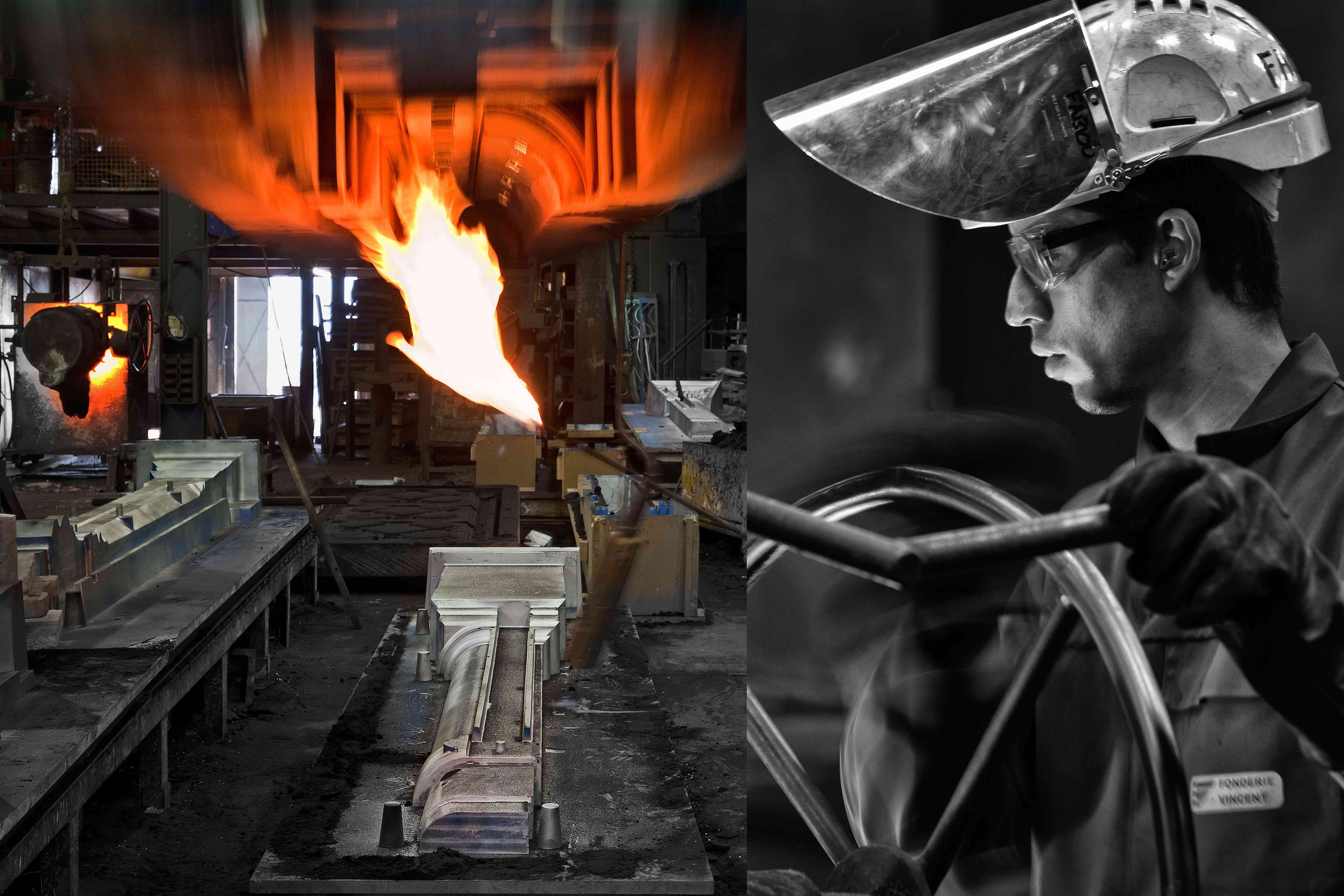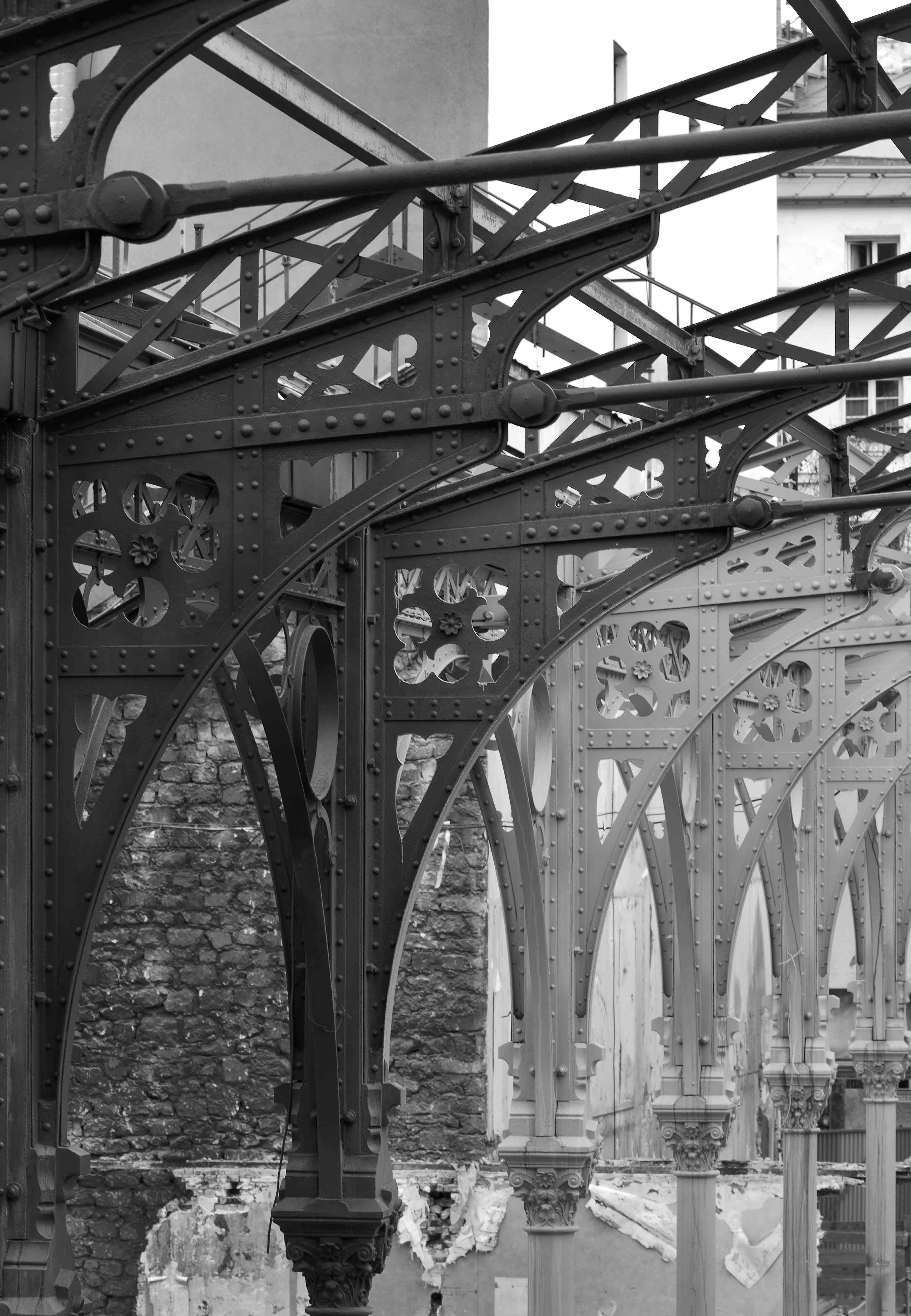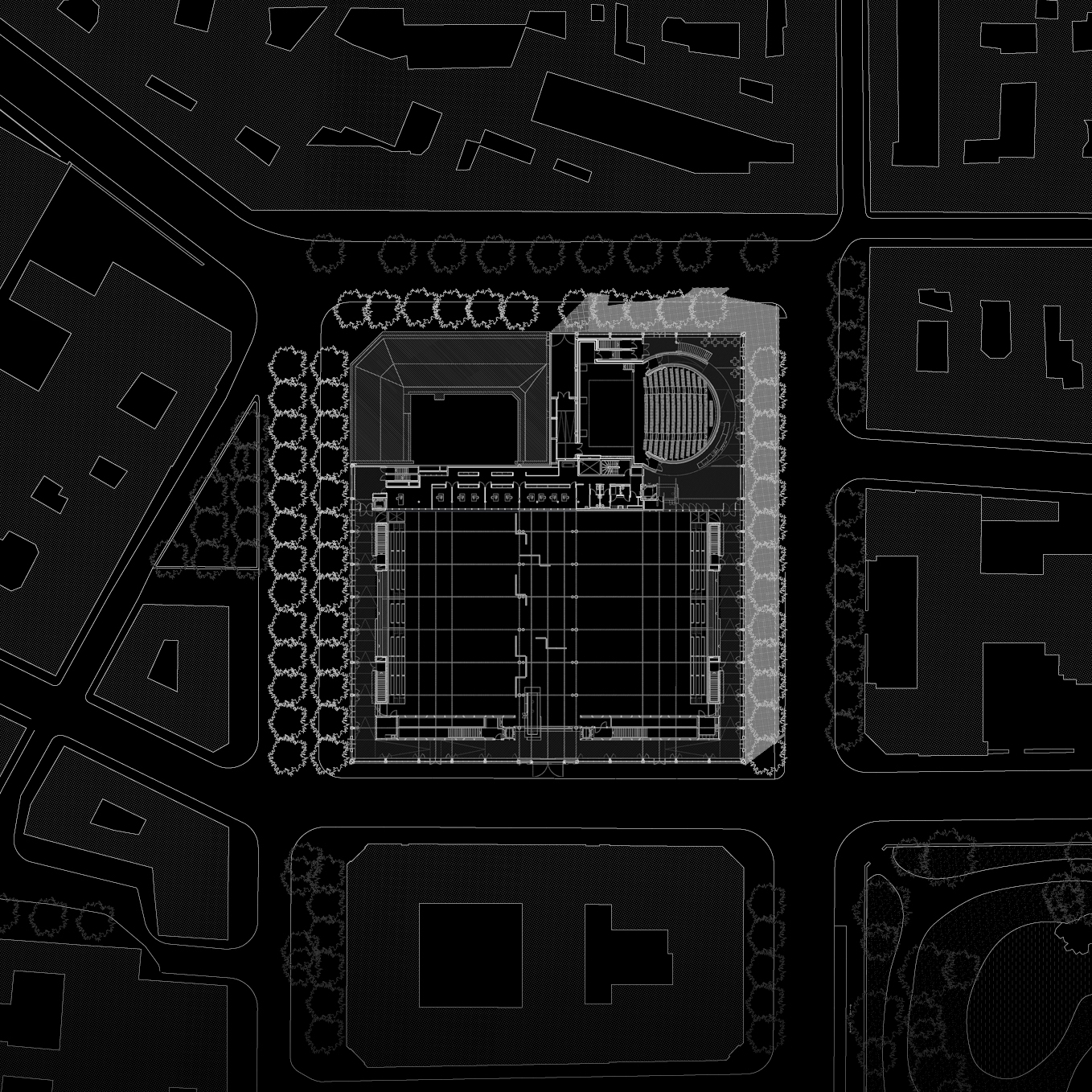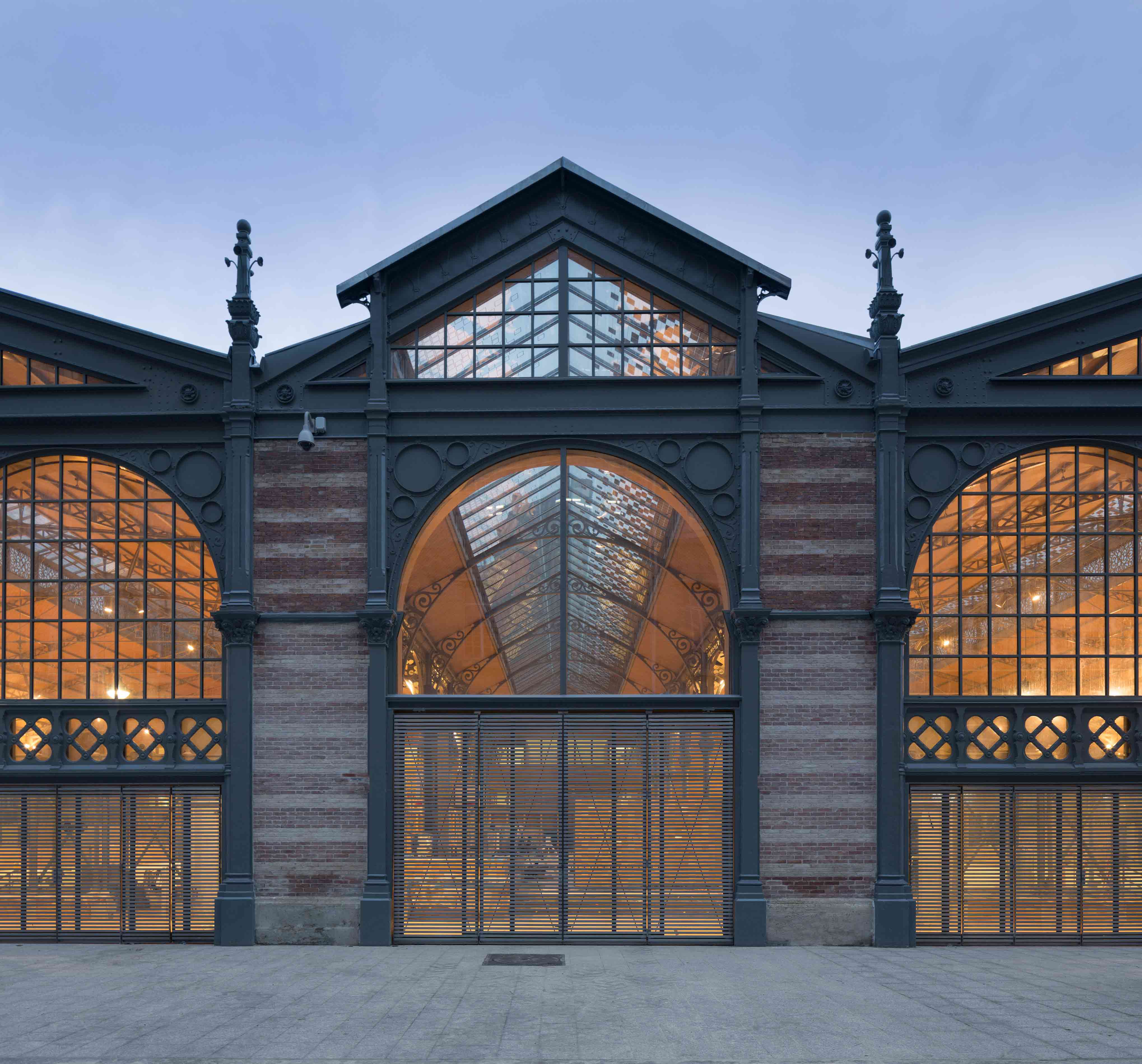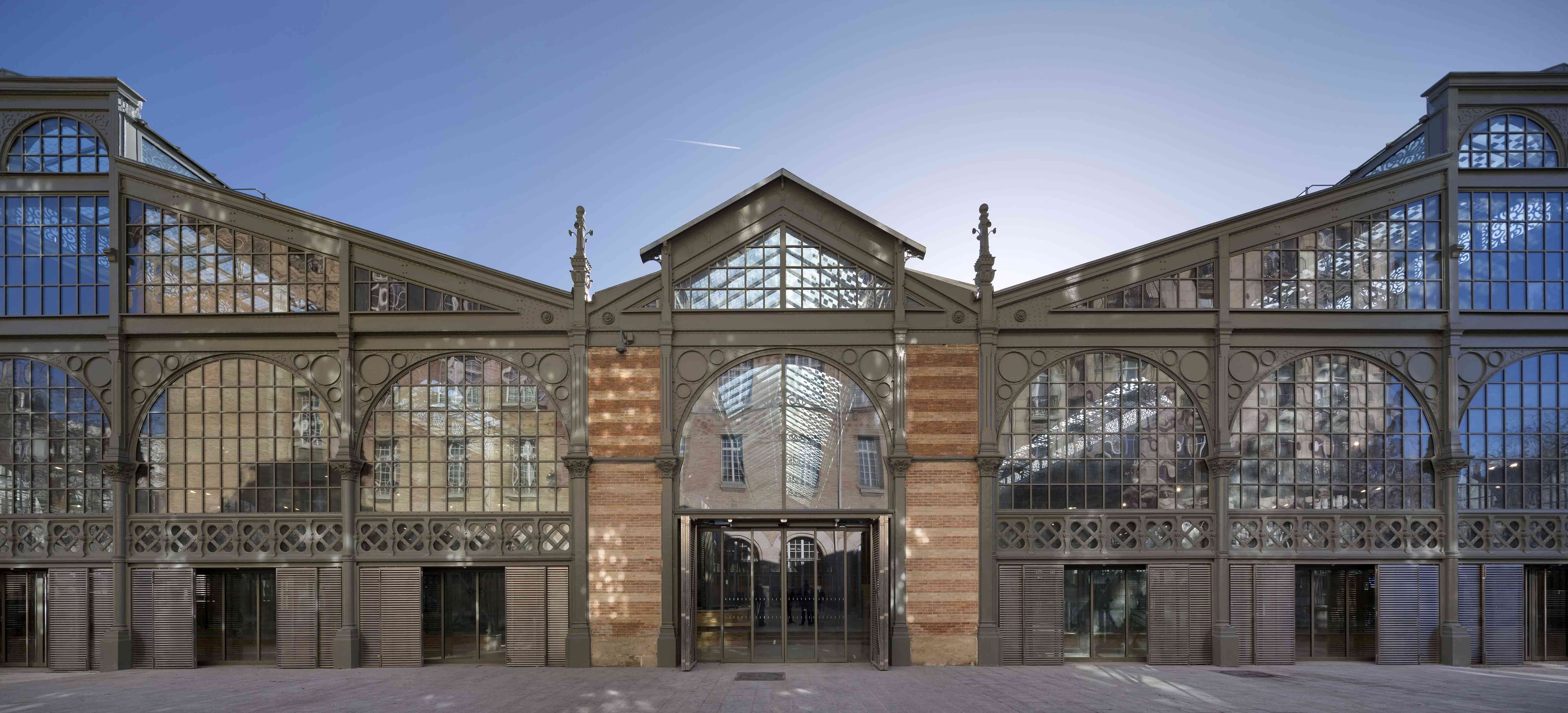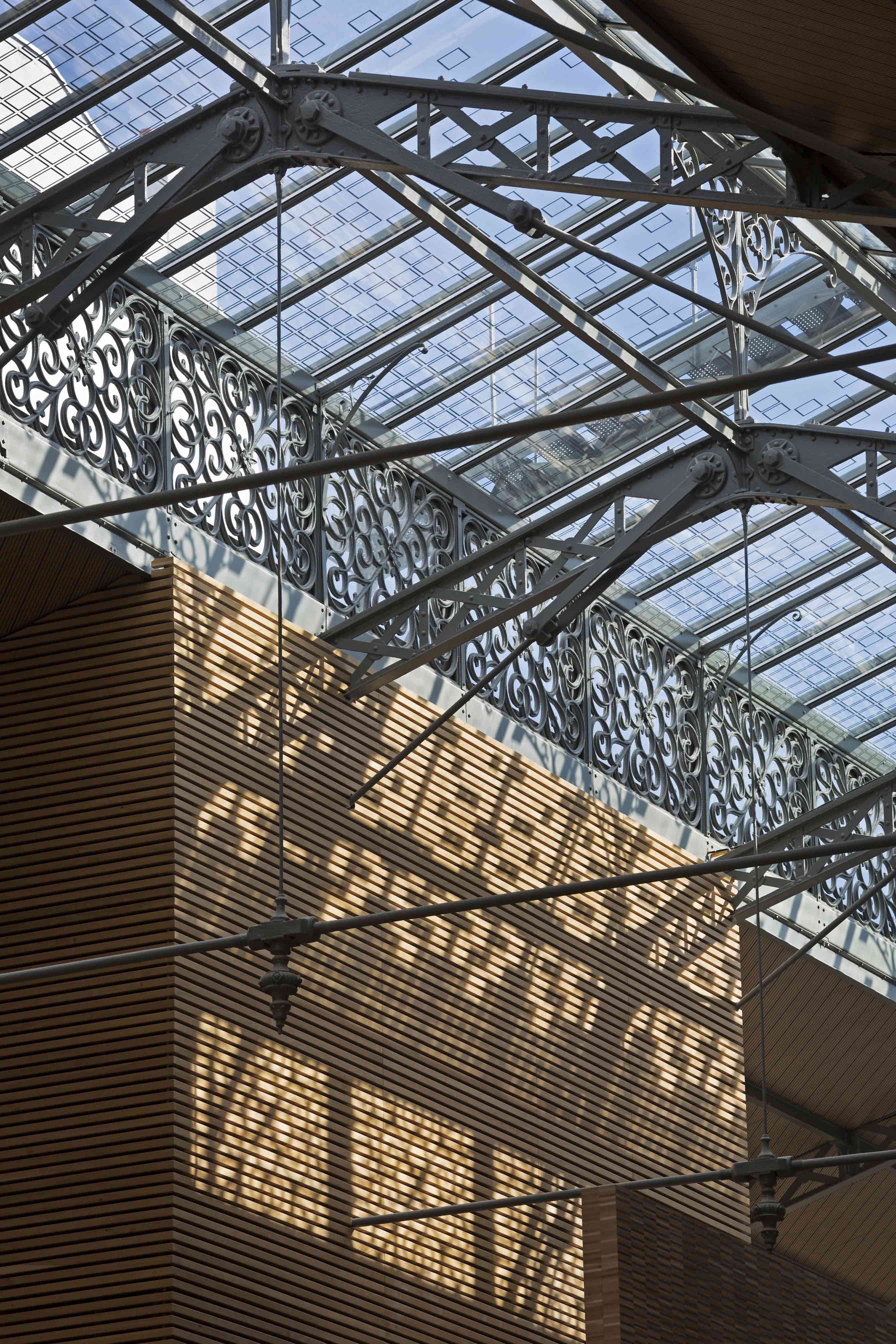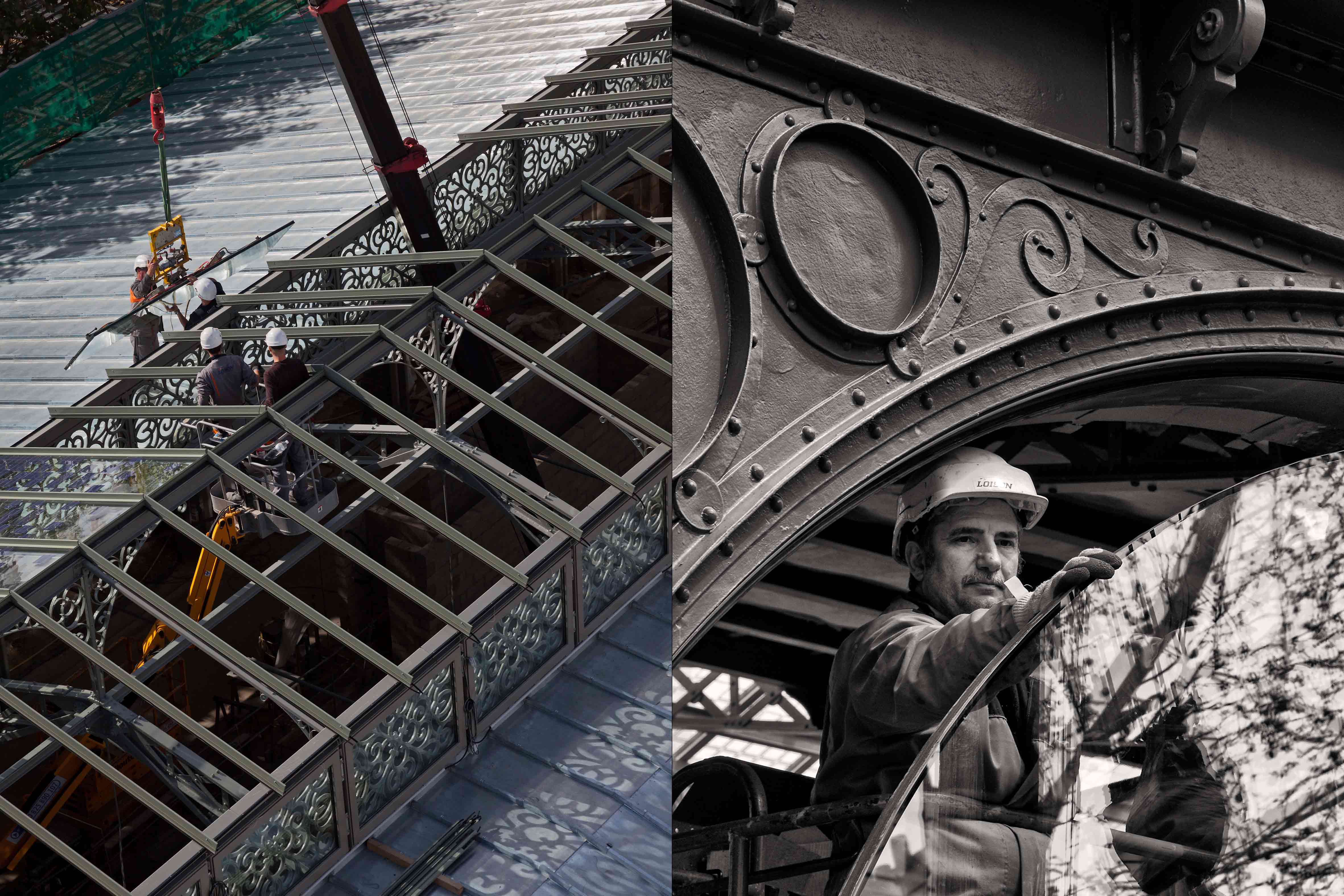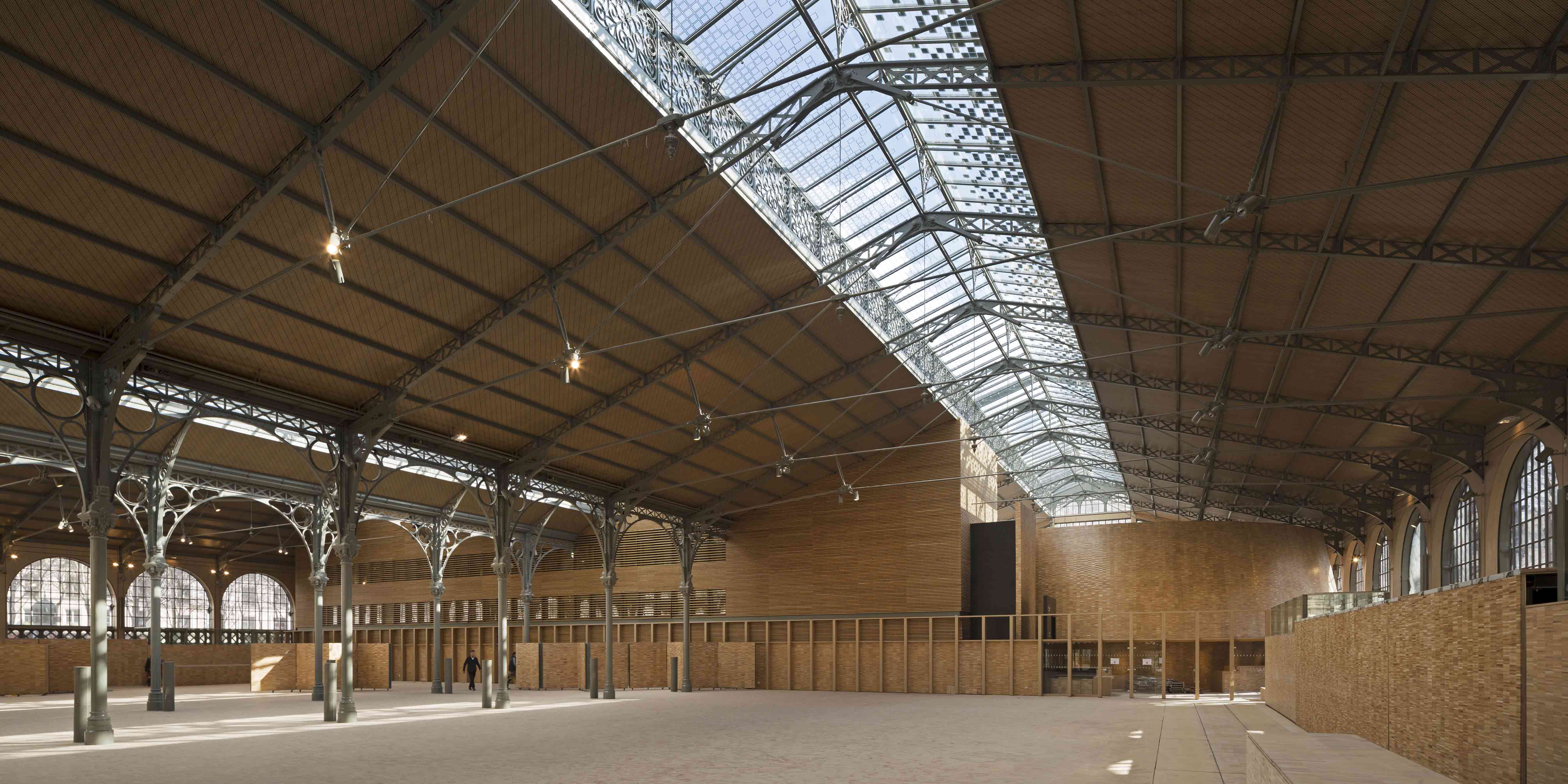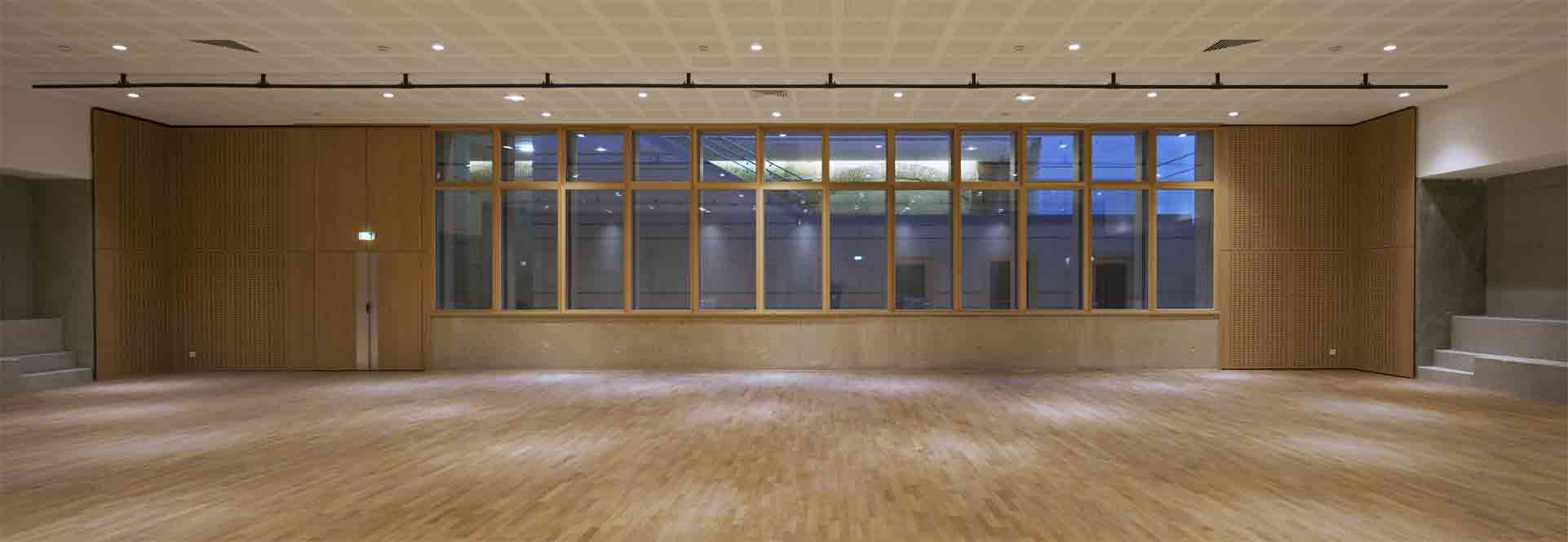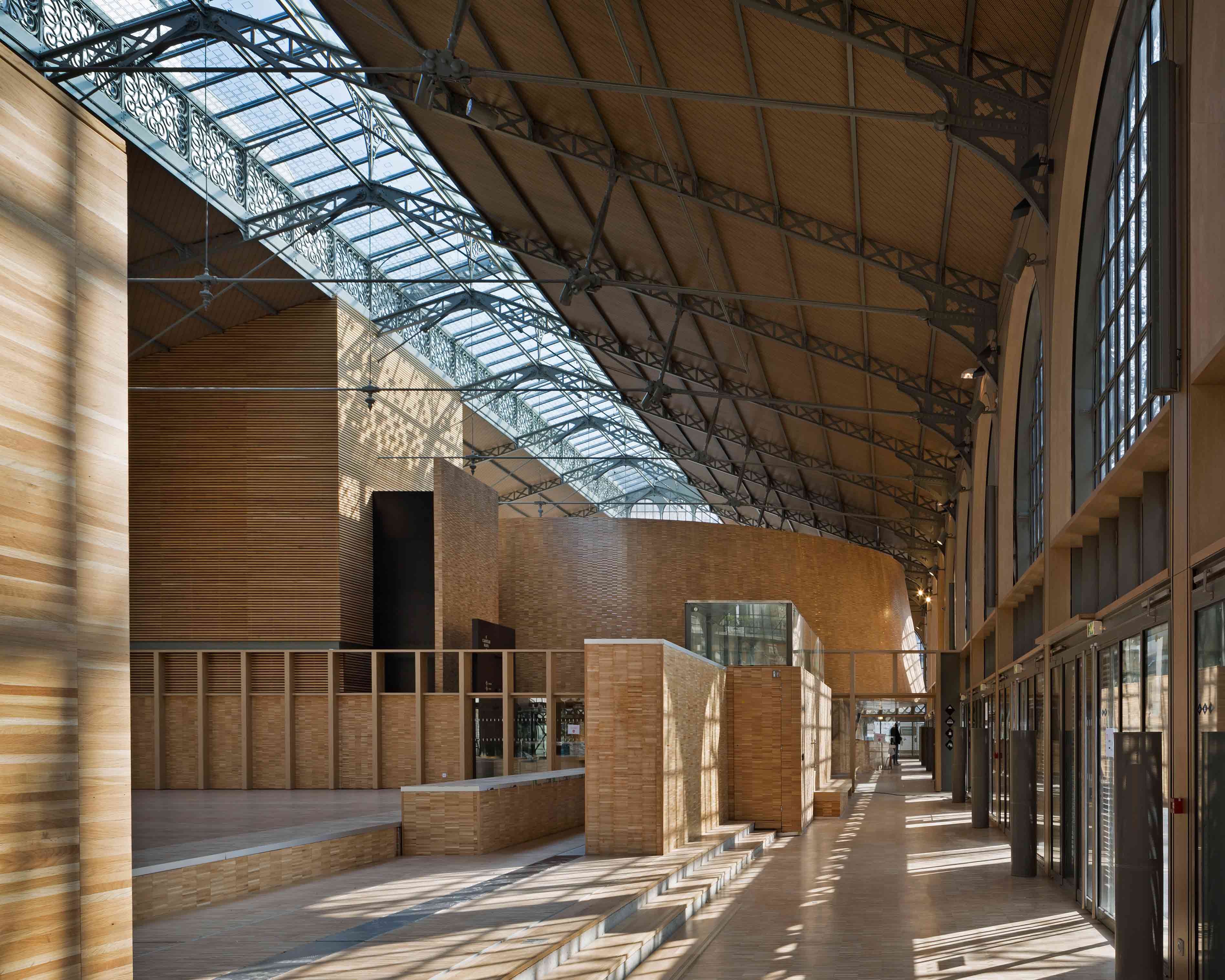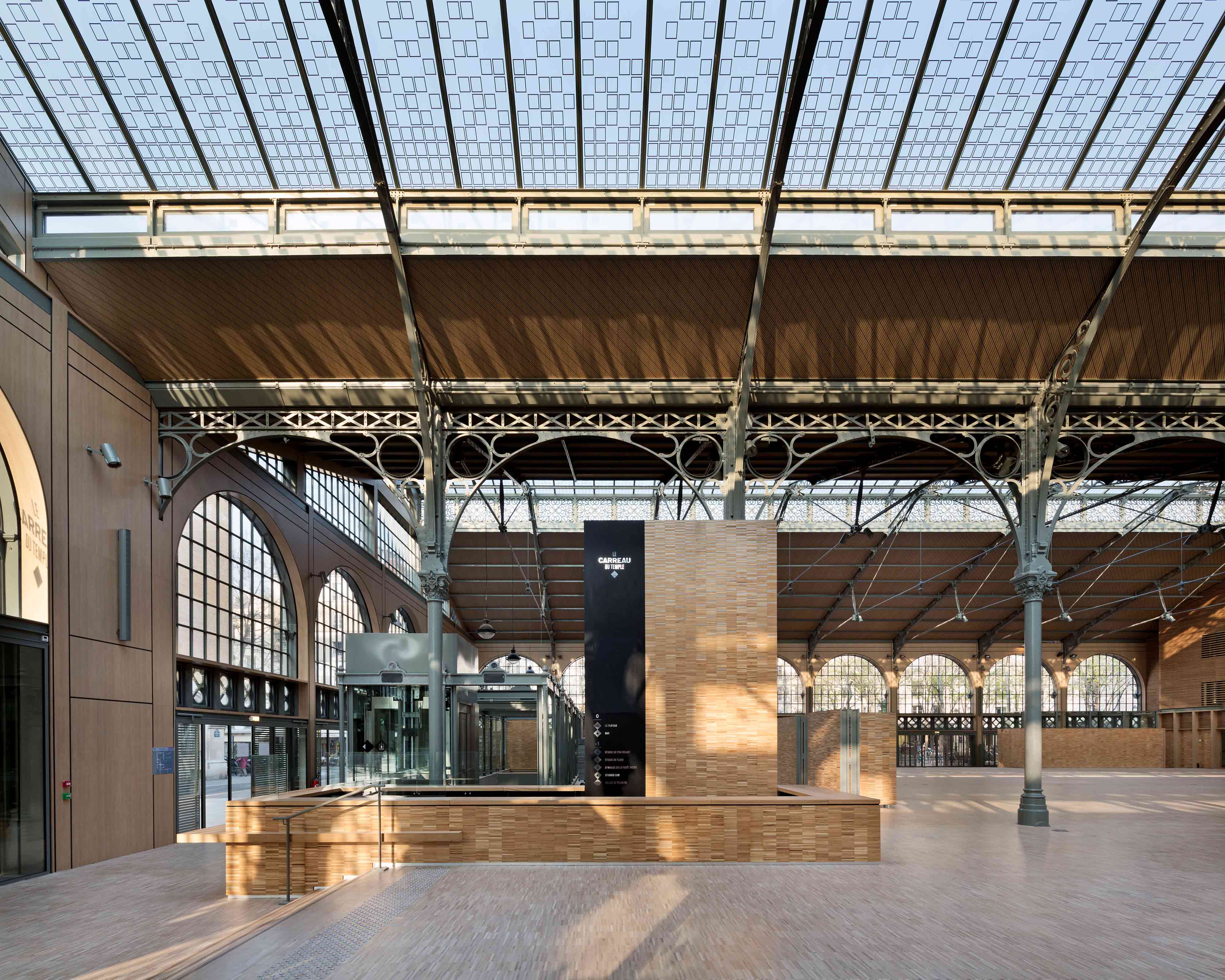
The New Carreau du Temple, Paris, France
Architects
Jean-François Milou, principal architect
Thomas Rouyrre, project leader
Shinobu Takaso, project team member
Client
Société Publique
Locale Le Carreau du Temple
Area
9,045 m2
Budget
35,000,000 EUR
Consultancy Service Scope
Preliminary & Detailed Design, Interior
Design, Exhibition Design, Contract
Administration / Construction
Bidding mode
1st Prize in Competition
Contract period
2002-2010
Implementation
2002-2010
Renaissance of the Carreau du Temple
The Carreau du Temple will reopen its doors in the spring of 2014, following a project to restore one of the sole surviving vestiges of the great tradition of metal-framed architecture that marked Paris at the end of the nineteenth century. This building, with its characteristically transparent architecture, is an important part of the heritage of the Marais district.
This impressive structure located near Duperré’s École Supérieure des Arts Appliqués and the historic Square du Temple laid out by Jean-Charles Alphand, the urban-planner of Baron Haussmann, had considerable importance for the Paris working classes for one century following its birth. Its market stalls where silk items, carpets, household fabrics and fashion accessories could all be bought, inspired writers who often took the Carreau as the setting for their novels, among them Eugène Sue in Les Mystères de Paris and Paul Féval in Le Fils du diable. In 1904, the building housed the inaugural Paris Fair. Earning a reputation as an essential point of call for buying ‘ordinary clothes for regular budgets and for the well-dressed’, hundreds of vendors had stalls at the site from the post-war period until the 1970s. However, over time business declined, and the Carreau was staked for demolition in 1976 to make way for a parking area, before being saved by the petitioning of five thousand local residents.
A competition was held in 2007 among five architectural firms. The jury awarded the project to restore and adapt the Carreau du Temple to studioMilou architecture, led by its founding architect Jean François Milou. Work on the Carreau began in 2008, but was suspended when investigation of foundations, located in the ancient enclosure of the Knights Templars, led to the discovery of archaeological remains. After a year of excavations, work recommenced in 2010, led by studioMilou’s project architect, Thomas Rouyrre.
Revealing a pure architectural
A minimal act of rehabilitation aims to reveal a pure and simple architectural form of the few surviving examples of Paris’s great tradition of 19th-century steel-and-glass architecture. The project aims to free the halls from any trace of networks, ducts or technical service structures. It minimizes the visual impact of the work on the facades. The aim is to allow the structure to stand forth and to bathe all its sides with light. This will reveal and illuminate the architectural form of the structure, putting it at the service of the building like a vast umbrella set down over public space. Steel, grey-coloured chestnut wood, grey-and-blue lacquered steel, interior volumes in grey and gold: The materials and the colours used have been chosen to match those of the architecture and the Paris sky.
A simple project that offers multiple uses
We propose an urban-like organization of the interior space of the new Carreau du Temple, creating parallel spaces on every level that are arranged around a central axis and a walkway around the edge. This spatial organization allows almost infinite uses to be imagined for the building, as well as easy reversibility. These features of the design will be resources for the building at every stage of its life. The project envisages the construction of a genuine, comfortable auditorium on the ground floor level. This can be used for musical events, and it will be served by a spectacular foyer area leading out onto the street. The ground-floor auditorium expresses the cultural dimension of the project, and it helps to reveal the elegant and simple character of the open volume of the hall, like a “golden shell” contrasting with the large dimensions of the main nave. The design proposes to use the mezzanine floor as a service floor, which will allow all the technical aspects of the project to be kept apart. Free of pipes, ducts, and technical installations, the interior volume will thereby retain its free and open character. In the same way, the project includes a system of built-in features that can be raised or lowered at will. The screens used to darken the interior can be raised as desired, as can the seating around the edges, this flexibility allowing the creation of a multi-use area that can be entirely opened up onto the surrounding public space. The automatic system employed allows future users of the Carreau to change the building’s configuration in a couple of minutes without the need for any external help through the simple movement of the screens and tiers.
The Renovation of the Building
Chief Architect and Principal Consultant
studioMilou architecture Jean François Milou, principal architect and lead designer Thomas Rouyrre, architect and project manager Shinobu Takaso, architect, main assistant architect, interior design and signage Lorène Pouliquen, architect dplg, main assistant architect, 2008-2010 Jean Loup Baldacci, architect dplg, independent competition design and 3D Sébastien Guiho, architect dplg, assistant architect Florence Soulier, contracts and legal affairs Agueda de Urruela, administrative assistant for construction period Fernando Javier Urquijo, photographer The following also contributed to the project : Volha Aukimovich, Laurence Macheboeuf, Angel Menéndez, Eudora Tan,Tae Woo Kim, Nicolas Huche, David Tresilian, Antoine le Fraiteur
Technical Consultants
Bollinger + Grohmann, Simone Murr, structural engineers Batiserf Ingénierie, Pierre Olivier Cayla, structural engineers Inex, Pierre Gimla, Pascal Astasie, mechanical & electrical engineers Ayda, Yves Dekeyrel, acoustics, competition to detailed design Tribu SARL, Emilie Rocha, design, Camille Morvan, environmental quality Architecture et Technique, Jacques Moyal, auditorium design Cosil, Gérard Foucault, Nawel Créach-Dehouche, lighting design Bureau Michel Forgue, Michel Forgue, J.Yves André, quantity surveyors
Contracting Authority
Ville de Paris Direction du Patrimoine et de l’architecture / ACOP : Jean-Francois Danon, Marie Hélène Borie, director DPA Virginie Katzwedel, architect, project manager Christophe Crippa, assistant project manager Direction Jeunesse Sports, Eric Ringenbach, project supervisor Algoé, Alexandre Picoulet, Marion Talarmin, technical and quantity surveyors, advisors to the contracting authority
Veritas, Pascal Queru, Alain Beyrand, Anne-Sophie Nizet BC, quality supervisor IPCS, Pascal Jaton, Ludovic Beyneix, Raphael Picciotino, David Pieron OPC, planning of the works Maximis, Cyril Bernu, SSI Coordinator, fire safety coordination, project manager I2S, Alain Deruy, security supervisor Coteba, Dany Pochol, operations management IUD Seges, Tehrani until August 2013 (CSPS), on-site workers social health safety compliance Cossec, Frédéric Achaintre since September 2013 (CSPS), on-site workers social health safety compliance Erich Berger (CSTB), technical centre studies of the building
Consultants
Marie-Hélène Didier, conservateur-général des monuments historiques, advisor on heritage buildings (DRAC) Sophie Hyafil, architecte des bâtiments de France, state heritage architect (ABF) Philippe Simon, architect, heritage study Musée Carnavalet, Paris (documents and heritage areas) Renée Davray-Piékolek, chief curator, Musée Carnavalet Catherine Tambrun, manager, photographic collections, Musée Carnavalet
Operator
Société Publique Locale Le Carreau du Temple Jean-Luc Baillet, director-general, Carreau du Temple CEO Jean Pierre Belet, technical director, Carreau du Temple Maroussia Jannelle, graphic designer and signage
www.carreaudutemple.eu Address : 4, rue Spuller 75003 PARIS
Area: 9045.20 m2 Construction Cost (estimated): 34.8M € excluding tax Overall Costs: 60M € excluding tax Official Opening: 20 February 2014 Public Opening: April 2014

